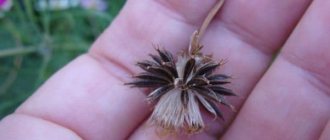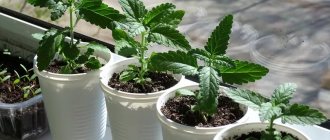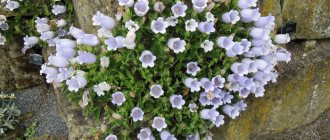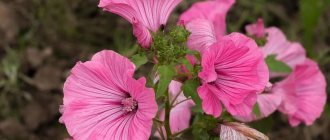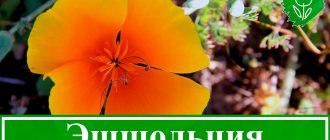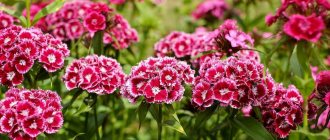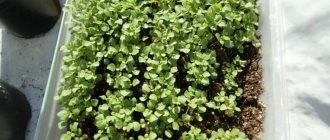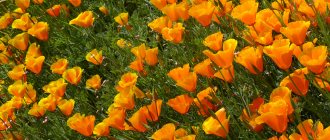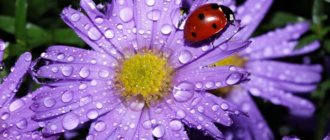This plant is resistant to diseases, pests, hot and dry weather. Thanks to its colorful beauty and unpretentiousness, it is loved by many gardeners. Flowering lasts from July until the first frost, and then the flower dies, as it cannot tolerate the cold. For the same reason, the crop in our country is grown as an annual (however, in warm regions it is possible as a perennial). Our popular species are graceful and narrow-leaved zinnia, among them there are low-growing (dwarf), medium-growing, tall, pompom, and dahlia-shaped varieties. You can immediately plant the plant in open ground, but when growing zinnia from seeds at home, you can get flowering 2-3 weeks earlier.
Content
- 1. Subtleties of growing zinnias 1.1. Where to get seeds
- 3.1. When and how to plant zinnia in a flower bed
- 4.1. Stages of sowing zinnia seeds
Garden zinnias (Zinnia), or “majors”, are bright, with a rich palette, very beautiful flowers that retain their decorative effect for a long time.
They have been grown for a long time and are still loved by many gardeners for their unpretentiousness to the quality of the soil and its moisture. Gardens, parks, flower beds and flower beds decorated with these plants delight the eye from mid-summer until frost. The types of zinnias are varied:
- giant Californian , reaching a height of 120 cm;
- dwarf , forming a carpet of inflorescences 25 cm from ground level;
- dahlias , similar to noble, but not so whimsical, dahlias;
- Zinnia cactus : zinnias of various colors with spherical or chrysanthemum-shaped flowers.
IN THE PHOTO: Dahlia zinnia variety 'Lavender'.
Decorating your space with these colorful flowers is not at all difficult. The main thing is to know how to grow zinnias from seeds.
Types and varieties
Of the more than twenty species of zinnia, only four are grown in culture: graceful zinnia, narrow-leaved zinnia, also known as Hage zinnia, thin-flowered zinnia and zinnia linearis. The first two species served as the basis for fruitful breeding work, and, thanks to its results, today we cultivate in our gardens not only the main types of zinnia, but also many beautiful varieties and hybrids of this plant.
Zinnia elegans
Herbaceous annual up to 1 meter high and higher with simple white, orange and pink inflorescences. The stem is straight, mostly unbranched, round in cross-section, densely pubescent with hard hairs; all shoots end in apical inflorescences-baskets. The leaves are sessile, entire, ovate, with a pointed apex, 5-7 cm long and 3-4.5 cm wide, the surface of the leaf is pubescent, like the stem. Inflorescences with a diameter of 5 to 16 cm, simple, semi-double and double, consist of reed flowers up to 4 cm long and up to 1.5 cm wide, painted in all kinds of colors, except shades of blue, and median, tubular flowers of yellow or reddish-brown color .
Types and varieties of celosia - an amazingly beautiful flower
Graceful zinnia blooms in June and can bloom until the coldest weather. In nature, it is most common in southern Mexico. In culture since 1796. Varieties and hybrids of graceful zinnia are classified according to several characteristics: by the structure of the inflorescences, by their shape, by the height of the stem and by the timing of flowering.
In the photo: Elegant zinnia (Zinnia elegans)
According to the timing of flowering, there are early-blooming, mid-blooming and late-blooming zinnias.
According to the structure of the inflorescences, varieties are divided into simple, semi-double and double.
Depending on the height of the stem, it happens:
- tall zinnia (60-90 cm), grown for cutting, since it looks somewhat bulky in a flowerbed;
- medium zinnia (35-50 cm) – suitable both for cutting and for decorating flower beds;
- Dwarf zinnia, or low-growing zinnia (15-30 cm) - usually these are well-branched bushes, grown both in flower beds and in balcony containers and simply in pots.
In the photo: Elegant zinnia (Zinnia elegans)
Zinnias are divided into seven categories based on the shape of their inflorescences. In our climate, the most commonly grown of these are:
- Zinnia dahlia - powerful bushes, spreading or compact, 60 to 90 cm high with shoots of the first order. The leaves are large - up to 12 cm long, the inflorescences are hemispherical, double, up to 14 cm in diameter. Varieties: Violet - terry zinnia 60-75 cm tall with dense inflorescences of different shades of purple, Orange Koenig - on stems 60 to 70 cm high, bright red-orange double inflorescences up to 14 cm in diameter, Polar Bear - a compact plant up to 65 cm high cm with densely double white inflorescences with a greenish tint;
- Lilliputian zinnia, or pompon zinnia, is a compact branched bush no higher than 55 cm with a large number of shoots of the second, third and fourth order, small leaves and small inflorescences, only up to 5 cm in diameter, resembling a pom-pom on a hat. Varieties: Red Riding Hood - a densely double variety up to 55 cm high with truncated-cone-shaped or rounded inflorescences of a bright red hue; Tom Thumb is a compact bush up to 45 cm in height with dense double red inflorescences in the shape of a slightly flattened ball; Tambelina is a variety mixture of different shades with a bush height of up to 45 cm and inflorescence diameter from 4 to 6 cm;
- zinnia fantasy - almost spherical compact bushes 50-65 cm high with large leaves and loose curly inflorescences, in which narrow reed flowers are rolled into tubes and curved in different directions, and at the ends some of them are forked. Varieties: Fantasy - a bush up to 60 cm high with double loose inflorescences up to 10 cm in diameter in different shades - purple, red, bright yellow, purple, red-orange, pink, white, salmon, etc.; The gift is a bright red zinnia.
In the photo: Elegant zinnia (Zinnia elegans)
Also popular in the culture of other countries:
- Californian giant zinnia - varieties of double zinnias with a diameter of up to 16 cm with imbricated reed flowers and a stem height of up to 1 meter or more. They differ in relatively late flowering;
- giant cactus zinnia - varieties ranging in height from 75 to 90 cm with double inflorescences up to 11 cm in diameter with reed flowers rolled into a tube, sometimes wavy with raised tips;
- zinnia supercactus - varieties with the same inflorescences as those of giant cacti, but no more than 60 cm in height;
- zinnia scabiosa (also anemone-flowered) - varieties with an inflorescence up to 8 cm in diameter, in which reed flowers are arranged in one row around the middle, consisting of tubular flowers overgrown with corollas, which makes the middle look like a hemisphere, colored to match the reed flowers.
In the photo: Elegant zinnia (Zinnia elegans)
Zinnia angustifolia
Or Zinnia haageana - also native to Mexico. This is an annual erect plant that forms branched bushes. The leaves are sessile, lanceolate or elongated, pointed. The inflorescences are small, simple or double, bright orange. Varieties:
- Growing daisy seedlings: sowing and picking
- Glorienshain is a highly branched bush up to 25 cm tall with double inflorescences, in which the reed flowers are dark orange at the base and red-brown at the ends;
- Persian Carpet Mixed series with semi-double bicolor inflorescences of red with lemon, white, orange and yellow - a large mass of this zinnia really looks like an oriental carpet.
- variety mixtures Starbright and Classic have also become famous - plants with inflorescences of white, yellow and orange tones up to 30 cm in height with a thin and weak, but highly branched creeping stem. These zinnias are mostly used as ground cover plants.
- Zinnias of the Sombrero variety look nice in a flower bed - inflorescences of a red-brown hue with an orange border.
In the photo: Zinnia angustifolia
Zinnia tenuiflora
It is usually used to create landscape flower beds and consists of bushes about 60 cm high with angled thin stems of a reddish hue. The inflorescences are small, up to 3 cm in diameter, the reed flowers are narrow, bent, with curled tips, of a purple hue. Varieties: Red Spider.
Zinnia linearis
It is sometimes confused with angustifolia zinnia because its leaves are thin and sharp, like the ends of nail scissors. This is the smallest of the cultivated species - branching, almost spherical bushes grow no higher than 35 cm. Linearis inflorescences are small, reed flowers of yellow color with an orange edge. Zinnia linearis is suitable for growing in pots, in balcony containers, on alpine hills and in small flower beds. Varieties:
- Golden eye - white center of tubular flowers, reed flowers are white - the variety is similar to an ordinary chamomile;
- Caramel – the color of the reed flowers is caramel yellow, the center is black;
- Yellow Star is a variety with yellow inflorescences.
In the photo: Zinnia linearis
From crossing the Haage zinnia and the graceful zinnia, many hybrids were bred, in particular, the Proffusion series, which is very popular among gardeners - low bushes up to 35 cm, strewn with small multi-colored daisies. The Magellan series is also gaining popularity - bushes up to 35 cm tall with densely double dahlia-shaped inflorescences with a diameter of up to 10 cm in coral, cream, orange, pink, red, cherry, salmon and yellow colors. The Swizzle series has recently appeared in gardens, consisting so far of two varieties - Cherry Ivory with cherry baskets with cream tips of reed flowers and Scarlett Yellow with red inflorescences and bright yellow tips.
Subtleties of growing zinnias
Where to get seeds
Typically, zinnia seeds are either collected from faded plants or purchased at the store. In the first case, you receive planting material adapted to your climatic conditions (if you collect it in your region).
Then, most likely, the flowers will grow well and will be exactly like their parent specimens.
The exception to this rule is F1 hybrids grown from purchased seeds. As a rule, the offspring of F1 hybrids lose part or all of their parental characteristics. For example, if F1 was double, then its seeds can produce simple daisy flowers, or at best semi-double. The same applies to color, habit (plant shape) and other unique varietal characteristics.
The seeds are thin sticks in the center of a brown and dried flower.
IN THE PHOTO: Zinnia seeds are small and light. They are easy to lose during manual collection, so it makes sense to break off the dried basket of seeds, put them in a bag and sort them out at home on a sheet of clean white paper or a smooth, light-colored surface.
If the petals crumble in your fingers, and the contents of the box crumble when touched, you can start collecting.
Cut off the flower heads with sharp scissors, remove the seeds indoors and place them on a sheet of paper to dry. You can store seed in a jar with a lid or in a paper envelope in a cool, dry place. Planting zinnia seeds will be successful only if they are of excellent quality and properly stored.
Planting material
For a guaranteed result, you need store-bought seeds no older than 4 years (in the second year, germination reaches 95%) from a trustworthy manufacturer.
But you can also use your own seeds from varieties without the F1 mark - which means a hybrid, and flowers with this method of propagation are not able to inherit parental characteristics. And since zinnias are able to cross-pollinate, new plants can be surprising in their variation in characteristics. For example, by growing crimson and yellow zinnias side by side, you can, without planning this at all, get light-colored flowers with speckles.
Zinnia seeds ripen 60–65 days after flowering; after collection, they are sorted into groups:
- Flat corymbs are flattened brown seeds with a groove at the top. Only non-double zinnias, that is, ordinary zinnias, grow from them, even if they were collected from a double flower.
- Spear-shaped - darker than the above, have the formula of a “granule” tapering towards the base. They are known for their low germination rate, but if you take the trouble to grow them, double and semi-double flowers will bloom.
- Elongated - elongated gray seeds with an awl-shaped tail. Eventually they turn into double flowers with full heads.
4 common types of garden violets that will become an indispensable flowerbed decoration
It is noteworthy that all three varieties of seeds can ripen in different proportions in one box.
Seed preparation
How long to soak zinnia seeds before planting and is it worth doing it at all? Soaking is not necessary, but it allows you to select the best seeds from a variety of seeds.
Usually the strongest and most viable seeds are those collected last season. They begin to develop roots within 2-3 days. Old ones can sit for a week or longer before germinating.
The scourge of seedlings is fungal infections that can destroy zinnias at the very start of their development. To avoid infection with blackleg, powdery mildew, gray mold or root rot, the seeds are treated with a complex fungicide before planting.
Preparations such as Maxim and Topaz ; they are also successfully used when growing zinnia from seeds. Photos of plants affected by these diseases can be seen below.
IN THE PHOTO: Black leg.
IN THE PHOTO: Powdery mildew.
IN THE PHOTO: Gray mold (botrytis).
In addition, before planting the seeds in the ground, it is advisable to treat the zinnia seed to prevent leaf spot.
IN THE PHOTO: Leaf spotting.
Fitosporin-M or Abiga-Pik will cope well with this task. Already grown plants can be protected from insects (aphids, spider mites), slugs and snails by treating them with Imidor and Groza.
Sowing seeds
The easiest way to grow zinnia in seedlings is in peat pots or cassettes. Boxes for seedlings are also suitable.
The ideal soil for zinnias is light garden soil with a neutral pH of 7.0 . The organic content in the seedling mixture is very beneficial for these flowers. When choosing soil in a store, pay attention to the organic components in its composition.
To grow zinnia seedlings, seeds are planted 1 cm deep in the soil, watered, and then covered with a dark film. In dark conditions, seedlings appear faster.
To increase the chances of getting a large number of strong seedlings, several seeds are planted in each cup. After germination, the strongest seedling is left and the rest are removed.
Sometimes, after planting seeds, zinnias are pinched at the growing point to improve branching and increase the number of inflorescences.
What conditions are best for zinnia? Growing seedlings from seeds works well when maintaining the ambient temperature within 22-24°C . Developing plants need plenty of light and moderate soil moisture.
Before planting in open ground, seedlings should be hardened off. To do this, you need to take it outside in warm sunny weather for 10-14 days. First for a couple of hours, and by the end of the first week - for the whole day.
When and how to plant zinnia in a flower bed
Frost can destroy young zinnia seedlings. Therefore, seedlings are planted outside only after the risk of their return disappears. This is usually done in late May - early June. Plants are planted at a distance of 25-40 cm from each other. For large species this distance is increased.
The arrangement of individual low-growing zinnias (for example, varieties 'Lilliput' or 'Chip 'n Dale' ) can be more compact. 25 cm will be enough. For growing zinnia 'Persian carpet' and other medium varieties, a distance of 35 cm is suitable.
IN THE PHOTO: Zinnias 'Persian carpet'.
Large plants of tall species ( 'Gypsy' , 'Peppermint Stig' , 'Magic Rose' , 'Burki' ) need a distance of 40 cm between specimens.
How to sow zinnia in open ground
There is another way to sow zinnia: growing from seeds in open ground. A sunny area, protected from drafts, is allocated for the flower garden. The soil is dug up, adding 8-10 kg of humus and compost. per square meter. You can add mineral fertilizers. After this, the soil is dug up again, but shallowly.
After such sowing, zinnias bloom in 2-2.5 months. With proper care, flowers remain decorative for 35 days, seeds ripen 2 months after the start of flowering.
In most Russian regions, zinnia can be sown from mid-May. In the Urals or Siberia, it is better to postpone sowing work to the beginning of summer.
Stages of sowing zinnia seeds
- Preparing the holes . The depth of each hole is 5 cm, the distance between them depends on the size of the future plants (variety).
- Adding seeds . 2 high-quality seeds are placed in each hole.
- Watering . Water the crops moderately; too much water is harmful to the majors.
After watering, you can cover the bed or flowerbed with film. After 1-2 weeks, the first shoots appear. When they have 4-5 leaves, the crops can be thinned out, leaving the tallest and strongest specimens.
When diving, the removed plants do not have to be thrown away. They can be transplanted to another location.
IN THE PHOTO: Strong zinnia seedlings.
Features of zinnia
The height of a zinnia bush directly depends on what species and variety it belongs to, and can vary from 0.2 to 1 meter. Sessile whole leaf plates have an ovoid shape, pointed towards the apex, they grow oppositely or whorled, and on their surface there is pubescence consisting of hard hairs. Inflorescences are single apical baskets, which can reach 3–14 cm in diameter; they are placed on relatively long peduncles. Reed flowers in baskets are arranged in a tiled pattern, and there can be one or several rows; they can be painted in different colors, for example, purple, yellow, white, orange or red. They cannot be painted only in various shades of blue. Small tubular central flowers in inflorescences are brown-red or yellow in color. The fruit is an achene with a tuft.
Flowering begins in the second half of June, and ends with the first frost. Zinnia is resistant to both drought and heat. It is grown as a spectacular garden plant, which is distinguished by its unpretentiousness, and it is also excellent for cutting. Zinnia perennial is grown only in those regions where winters are quite mild and warm. In mid-latitudes, this crop is grown only as an annual, because this plant dies even due to a slight and not very long frost. Gardeners call him Major. In Europe, rustic landscapes are becoming increasingly popular, with the main flowers being annuals such as marigolds, marigolds, zinnias and daisies. It is also grown in flower beds with other more noble flowers. Zinnia is also grown among vegetables in the garden, as it has the ability to stretch upward, while creating virtually no shadow.
Zinnia: cultivation and care
Care after transplant
Unpretentious zinnia, which even novice gardeners can grow from seeds, can tolerate drought quite well. But at the same time it loses the beauty and brightness of the inflorescences.
If it is not possible to water the plantings often, this is not a problem. Just increase the water flow when watering so that the plants have time to receive it in the required quantity.
Zinnias need to be fertilized with mineral fertilizers; excess organic matter in the soil can cause plants to be affected by powdery mildew. Before planting seedlings, flowers are watered 2-3 times with a solution of complex mineral fertilizer with a minimum of nitrogen.
After transplantation, the seedlings are fertilized after 2 weeks and the last time just before flowering. Poor soils are improved every 2-3 weeks with complex fertilizers with NPK 15:15:15. You can read more about them in our article “Types of fertilizers and their features.”
